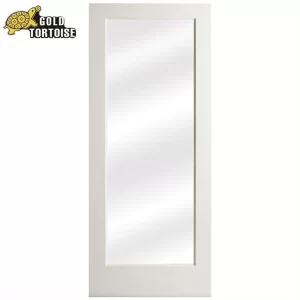The clearance requirements for a fire-rated door, often referred to as the gap between the door and the frame, are critical for proper functioning and to maintain the door’s fire resistance. The specific clearance requirements can vary based on factors such as the door’s fire rating, local building codes, and the type of door. Here are some general guidelines:
Clearance around the Door:
Fire-rated doors typically require a specific clearance around the edges of the door. This gap is important for the proper operation of intumescent seals and to allow the door to expand in case of a fire. Common clearances range from 1/8 inch to 3/16 inch on the sides and top of the door.
Threshold Clearance:
The clearance at the threshold (bottom of the door) is also crucial. The gap at the threshold allows for the installation of door sweeps or automatic door bottoms, which help seal the gap and prevent the passage of smoke and flames. The threshold clearance can vary, but it is typically around 3/4 inch or as specified by the door manufacturer.
Intumescent Seals:
Some fire-rated doors are equipped with intumescent seals that expand when exposed to heat, creating a seal around the door. The clearance provided should allow for the proper expansion of these seals during a fire.
Manufacturer’s Recommendations:
It’s essential to follow the manufacturer’s installation instructions and recommendations for clearance requirements. The manufacturer will provide specific guidelines to ensure that the fire-rated door functions correctly and maintains its fire resistance.
Local Building Codes:
Local building codes and fire safety regulations may specify clearance requirements for fire-rated doors. It’s important to consult the relevant codes and standards to ensure compliance.
Always check with the door manufacturer and local authorities to determine the specific clearance requirements for the fire-rated doors you are installing. Proper installation and adherence to clearance guidelines are essential to maintain the door’s fire resistance and ensure its effectiveness in the event of a fire.







